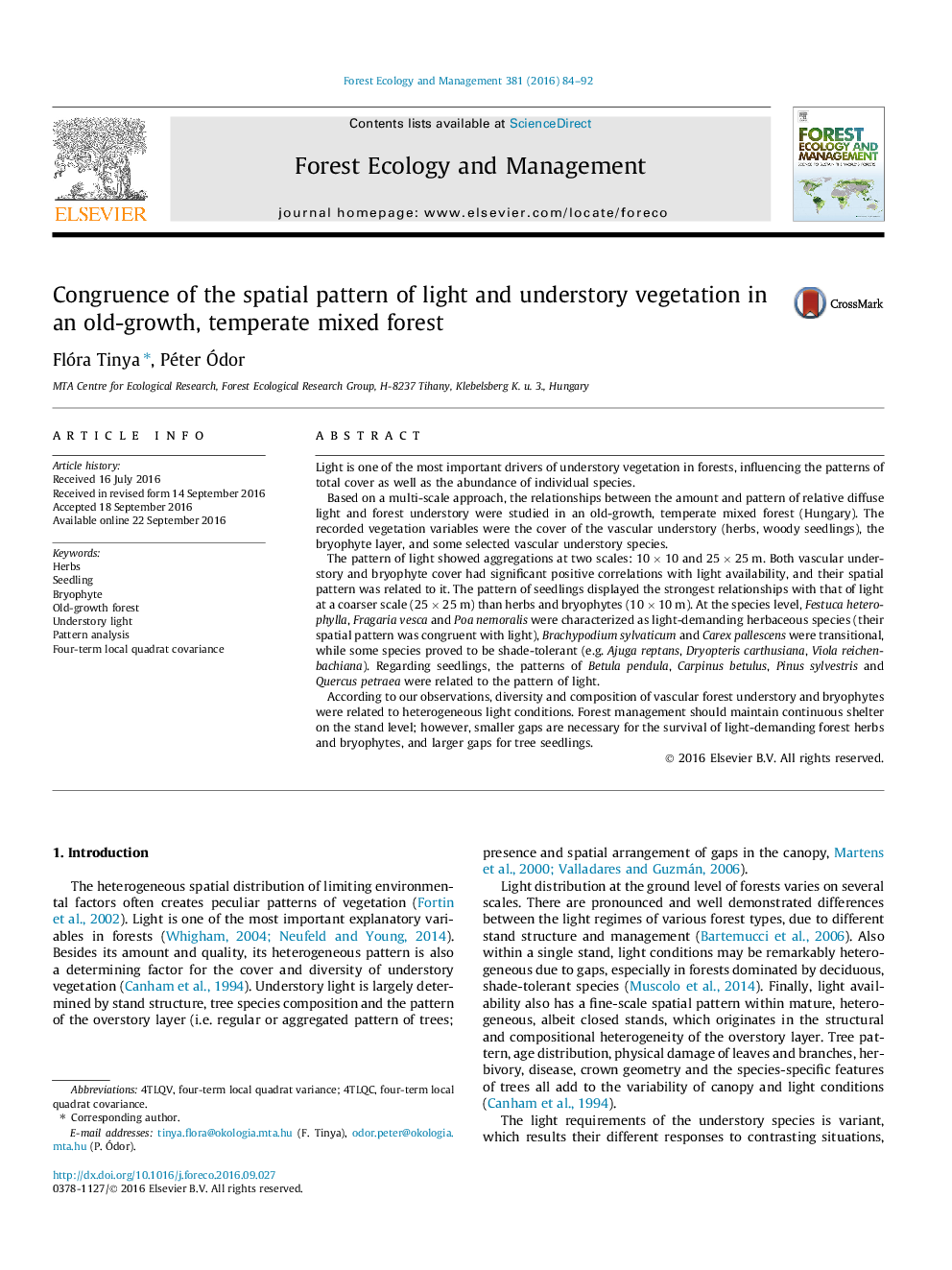| کد مقاله | کد نشریه | سال انتشار | مقاله انگلیسی | نسخه تمام متن |
|---|---|---|---|---|
| 6459544 | 1421377 | 2016 | 9 صفحه PDF | دانلود رایگان |
- Understory light had aggregated spatial patterns at scales of 10Â ÃÂ 10 and 25Â ÃÂ 25Â m.
- Herbs' and bryophytes' pattern was associated to the finer-scale pattern of light.
- The pattern of woody seedlings related to the coarser-scale aggregation of light.
- Herbs and seedlings were classified according to their response to light pattern.
- Heterogeneous light conditions are needed to maintain understory biodiversity.
Light is one of the most important drivers of understory vegetation in forests, influencing the patterns of total cover as well as the abundance of individual species.Based on a multi-scale approach, the relationships between the amount and pattern of relative diffuse light and forest understory were studied in an old-growth, temperate mixed forest (Hungary). The recorded vegetation variables were the cover of the vascular understory (herbs, woody seedlings), the bryophyte layer, and some selected vascular understory species.The pattern of light showed aggregations at two scales: 10Â ÃÂ 10 and 25Â ÃÂ 25Â m. Both vascular understory and bryophyte cover had significant positive correlations with light availability, and their spatial pattern was related to it. The pattern of seedlings displayed the strongest relationships with that of light at a coarser scale (25Â ÃÂ 25Â m) than herbs and bryophytes (10Â ÃÂ 10Â m). At the species level, Festuca heterophylla, Fragaria vesca and Poa nemoralis were characterized as light-demanding herbaceous species (their spatial pattern was congruent with light), Brachypodium sylvaticum and Carex pallescens were transitional, while some species proved to be shade-tolerant (e.g. Ajuga reptans, Dryopteris carthusiana, Viola reichenbachiana). Regarding seedlings, the patterns of Betula pendula, Carpinus betulus, Pinus sylvestris and Quercus petraea were related to the pattern of light.According to our observations, diversity and composition of vascular forest understory and bryophytes were related to heterogeneous light conditions. Forest management should maintain continuous shelter on the stand level; however, smaller gaps are necessary for the survival of light-demanding forest herbs and bryophytes, and larger gaps for tree seedlings.
189
Journal: Forest Ecology and Management - Volume 381, 1 December 2016, Pages 84-92
